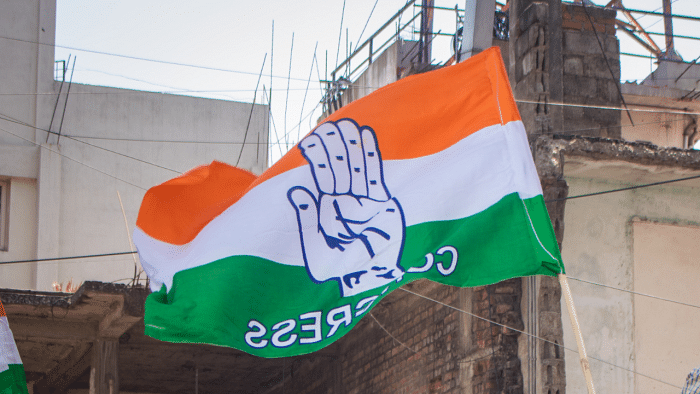
The political thrust demonstrated at Jammu by members of the ‘G-23’ in Congress is aimed at stirring the cauldron within the party. It indicates the start of a prolonged battle by the group to establish presence as a force capable of challenging the existing order, or the lack of it.
Public pronouncements by the leaders at the rally underscored the basic theme that in the absence of an imaginative programme, the party is in a state of drift, with no perceivable attempt to correct course or to re-energise the party.
While these are early days yet to predict the possible outcome of the stirrings the G-23 is attempting to create, there is a strong view in Congress that these manoeuvres are guided by political opponents who would benefit from the disquiet within, contrary to the letter the G23 wrote to the party leadership. The letter avowed that the group’s intention was to strengthen the party and its internal working by infusing greater democracy into the organisation.
Having embarked on the path and earned some concessions in the form of organisational elections this summer, the G-23 decided to stay the course. The Jammu rally around Ghulam Nabi Azad, who retired from Rajya Sabha last month after a prolonged run, signals that more such rallies may be in the works.
What will the group do? Where does it go from here? The natural course would be to wait for the organisational elections, build opinion inside the party, and secure places in the new set up. Will the group members and their followers be accommodated with honour or be kept out by dismissing them as acting out of their vaulting political ambitions? Will Congress witness another split? It is difficult to read the tea leaves now, but a peep into Congress history could have an answer.
The Indian National Congress (INC) is no stranger to disagreements and dissent. In the past 50 years, INC has endured three major splits – in 1969, 1978 and 1994. Interestingly, in 1969, it was Indira Gandhi who effected the split, forming INC (Requisition), leaving the party seniors with the rump INC (Organisation).
In the post-Nehru and Shastri era, a tussle over who would control the organisation triggered the split, with the old guard grappling to establish the primacy of the party over the government. The electoral reverses of 1967 and the old guard’s bid to rein in the decision-making powers of the government led to differences and Indira Gandhi was shown the door. She set up the INC-R and reaped success in the 1971 general elections, diminishing the stature of the old guard, also known as the ‘syndicate’.
The second decisive break came in the backdrop of the post-Emergency electoral debacle and the traditionalists’ discomfort with the 1975-77 events. Indira Gandhi floated INC-Indira, or more popularly Congress (I), and swept back to power in 1980.
The characteristics of another major split in 1994 were vastly different from the earlier two. The Congress under Prime Minister P V Narasimha Rao had to contend with an authority outside the party in the form of Sonia Gandhi while his own political authority came under challenge in the wake of the 1992 developments at Ayodhya.
Leading the charge was Arjun Singh, the wily Thakur from Madhya Pradesh, and Narayan Dutt Tiwari, the leader whose unexpected electoral defeat in 1991 allowed Rao to become Prime Minister. Having embarked on a path of confrontation, the Tiwari Congress formation became a fait accompli but faltered as it never earned the blessings of 10, Janpath.
The common thread in all these splits or separations was that the party formed by Indira Gandhi remained in control as the real inheritor to the organisation that led the freedom struggle. In each case, the challenge to alter the existing order ended without leaving much of a mark on the political landscape. The Congress (O) was lost in the wilderness while Tiwari Congress made a Ghar Wapsi.
The context of the current stirrings in Congress is vastly different. Congress has been out of power at the Centre for the last seven years and its presence in state governments, either its own or in coalition, is restricted to a handful of states. The political terrain is much harsher as the BJP is cruising along relentlessly in its Congress-mukt Bharat campaign.
The inner working of the organisation remains an unclear arrangement, with interim president Sonia Gandhi holding fort while Rahul Gandhi’s stamp on key organisational posts is all too evident. Recent appointments in the party show that the current leadership is not willing to accommodate the G-23 letter writers in any manner or grant any concessions.
For the time being, the party has chosen to underplay the Jammu event, save for advising the G-23 to campaign in the coming Assembly elections in five states. Having bargained for time to hold organisational polls by June, the results of these Assembly elections would hold the key.
If Congress is able to wrest control in any state, the current leadership would have reasons to consolidate its grip further and deny any space to G-23; a reversal would make the G-23’s case stronger.
(The writer is a senior journalist)